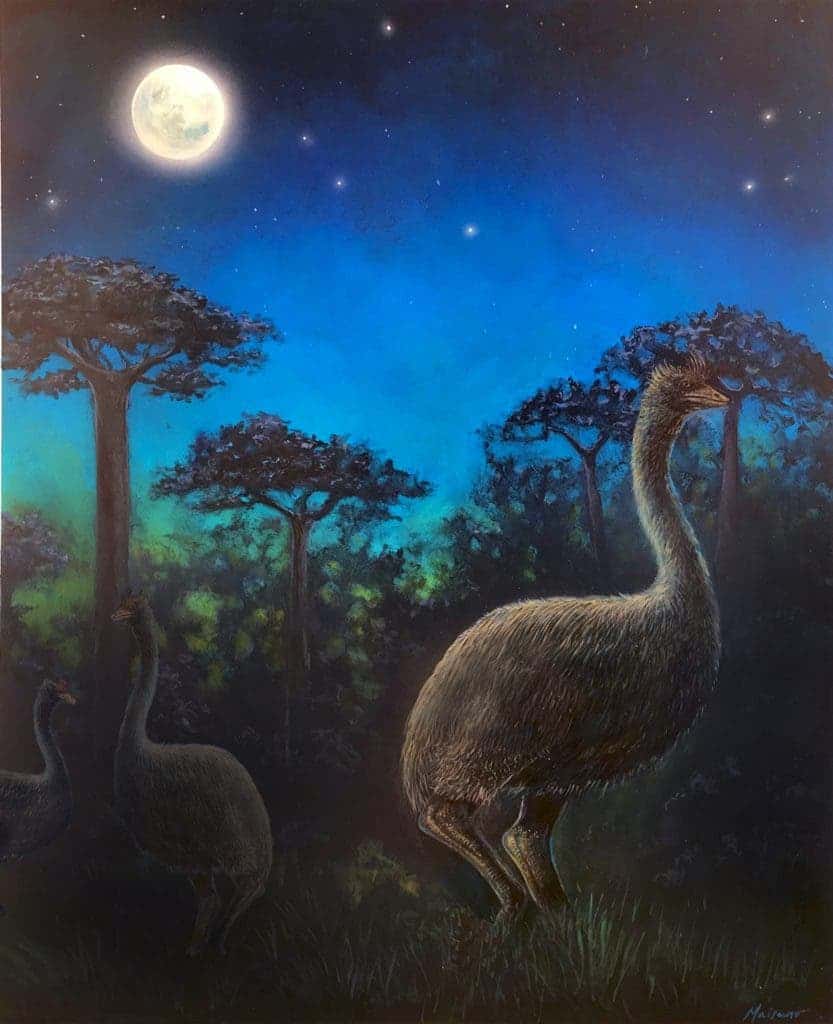They did have a keen sense of smell, though and probably lived in forests.

The biggest birds known to science are named, rather unceremoniously, elephant birds. Elephant birds lived on the island of Madagascar and went extinct around 1000-1200 AD, for reasons that are unclear (but probably include human activity). They were large, flightless birds. Scientists found that one species stood at least 3 meters tall (9.8 feet) and weight up to 730 kg (1,600 lb).
Now, a new brain reconstruction study found that the part of the bird’s brain used for processing vision was very small — which indicates that their eyesight was quite bad, and subsequently, suggests that the bird may have been nocturnal and/or even blind. Being nocturnal is also a similarity shared by its closest relative, the kiwi bird — a nearly-blind bird from New Zealand.
Christopher Torres, a PhD candidate who led the research, says this could tell us a lot about the bird, as well as the environment in which it lived.
“Studying brain shape is a really useful way of connecting ecology — the relationship between the bird and the environment — and anatomy,” Torres said. “Discoveries like these give us tremendous insights into the lives of these bizarre and poorly understood birds.”
Although poor eyesight is consistent with the kiwi relationship, other birds that resemble elephant birds — such as ostriches — are diurnal and have excellent eyesight. This is why
“No one has ever suspected that elephant birds were nocturnal,” Torres said. “The few studies that speculated on what their behavior was like explicitly assumed they were active during the day.”
Andrew Iwaniuk, an associate professor at the University of Lethbridge and an expert on brain evolution in birds who was not involved with the research, was also surprised — though he praised the study and did not doubt its findings.
“I was surprised that the visual system is so small in a bird this big,” he said. “For a bird this large to evolve a nocturnal lifestyle is truly bizarre and speaks to an ecology unlike that of their closest relatives or any other bird species that we know of.”
Torres and colleagues also report that the largest elephant bird species had a large olfactory bulb, a trait typically associated with a forest environment. Meanwhile, the smaller species were found to have a smaller olfactory bulb, suggesting that they lived in the grasslands.
“Details like these not only tell us about what the lives of elephant birds were like, but also what life in general was like on Madagascar in the distant past,” Clarke said. “As recently as 500 years ago, very nearly blind, giant flightless birds were crashing around the forests of Madagascar in the dark. No one ever expected that.”
The study was published in Proceedings of the Royal Society B. http://dx.doi.org/10.1098/rspb.2018.1540


